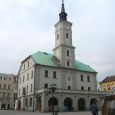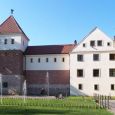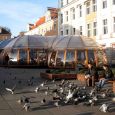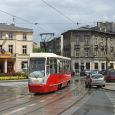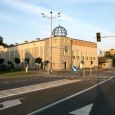Gliwice
Advertisement
By Air
At a distance of 100 km from Gliwice, there are three international airports:
Airport Pyrzowice (approximately 40 km)
Ostrava Airport (approximately 90 km)
Airport Krakow-Balice (approximately 100 km).Besides, in the city in the district Whereas the located sport airport Gliwice Flying Club.
By Train
The beginnings of the railways in Gliwice back half of the nineteenth century.3 October 1846 years ran 64 km, mostly 2-lane, railway line Katowice -Gliwice- Kedzierzyn Kozle.Gliwice railway station is the largest railway stations in the Upper Silesian Industrial District, according to the categorization of railway designated category A.
By Road
Gliwice lies at the crossroads of traffic routes: an east-west (highway A4), midnight - noon (highway A1).Within the city's motorway junction Gliwice - Sosnica connecting the motorway: A1, A4 and the national road 44.
By Bus
Public transport within the city organizes the KZK GOP.1 September 2009 years was suspended foreign exchange lines 1 and 4 in Gliwice on the section of the tram depot to the loop located within the district Wojtowa village.It is open only to stretch from the borders to Gliwice in Gliwice tram depot, which is one stop.Today it is the shortest active tram system in Poland.
By Ferry
In Gliwice operates Gliwice Canal which links Gliwice Harbour to the Oder River and thus to the waterway network across much of Germany and to the Baltic Sea.Klodnica Canal is no longer used to transport goods, but it is popular with leisure cruisers.
Gliwice Castle
The so-called Piast's Castle in Gliwice, southern Poland dates back to the mid-14th century.It consists of a tower from 1322, which was originally part of the city walls and an adjoining building which was probably an armory.Modifications were carried out in the 15th century, between 1558-61 it became the residence of Friedrich von Zettritz.Later it was an armory, a jail, a magazine and since 1945 a museum.Between 1956-59 it was thoroughly rebuilt and partially reconstructed.Since that time it is claimed to be a Piast castle, although no sourced evidence backs this claim.Since 1959 the castle has been part of the Gliwice Museum.
St. Paul's Cathedral
is a Cathedral Church in Gliwice in the district of downtown.The height of the tower of the cathedral is 75.5 m.The Church was built between 1,896 - 1.9 thousand and at the beginning was the filialnym church of All Saints parish.In 1908, there was erected the parish of St. Nicholas.Peter and Paul and its first pastor was Monsignor Joseph Jaglo.Bodies built Kurzer from Gliwice in 1900, had 42 votes.Rebuilt by the Austrian firm Rieger in 1936, increasing it to 54 votes.Authorities are now completely renovated in 2009.In 1992, Pope John Paul II established the Diocese of Gliwice and the parish church of St. Peter and Paul raised to the dignity of the cathedral.
Museum in Gliwice
Museum in Gliwice was established 22 March 1905 year and up to 1933 years was called the Upper Silesian Museum in Gliwice ( German Oberschlesisches Museum in Gleiwitz).The primary objective of the museum was the collection, sharing and preservation of historic sites and exhibits relating to Upper Silesia.From 1934 year the museum is the headquarters of Villa Oscar Caro Street.Lower shafts 8a.In 1960, he became a branch of the Museum after adaptation in the years 1956-1959 the former Piast Castle (Manor Cetrycza) Street. Under the Walls 2nd.Museum seems to "Year of the Museum in Gliwice."
Museum of Art Foundry in Gliwice
the museum includes collections of artistic cast bronze and cast iron.Currently, Department of Art Foundry is located in a former coal mine Gliwce (New Gliwice), in an old engine.The main part of Miroslaw Nizio by exposure consists of four cubes referring to the shape of the blast furnaces.Placed inside exhibits and multimedia presentations on the history of the art foundry in Gliwice and the history of metallurgy and industry in Silesia.Royal Iron Foundry after starting the 1796 year-fired blast furnace coke was one of the most modern production facilities in Europe late eighteenth century.Since 1991 years the foundry became a branch of the Museum in Gliwice.
Gliwice Music Theatre
is a music Theatre in Gliwice, established in 2001.His repertoire includes both classical operettas and modern musicals.Performances are presented on three stages: in the theater building on the street New World, in the ruins of the Municipal Theatre and the Stage Tale in the cinema studio Amok.Gliwice Music Theatre opened in June 2001.It was created on the site of the Silesian Operetta and Musical Theatre in Gliwice existing here since 1952 year.In their scenes took place on Polish premieres of musicals Man of La Mancha M. Leigh, Hello, Dolly J. Herman, premiere operetta ideal of S. Moniuszko.They performed here such artists as Maria Artykiewicz, Irena Brodzinska, Margaret Derdzianka, Xenia Grey, Wanda Polanska, Hanna Rutkowska, Stanislaw Bird, Ryszard Wojtkowski.
Silesian Jazz Club
Gliwice music association founded in 1956 year by a group of enthusiasts of jazz music.The organization and the club, as the site experienced its best period in the 60s and 70 and in the early 80th The twentieth century.For most of that time acted on the principles of association, or agent and concert agency.At the turn of the 70s and 80 SJC even employed full-time employees.Under the auspices of the SJC was established and operated High Society Band, a Polish band performing traditional jazz.The first years of the existence of "Square" in the late 70s also passed under the auspices of the association due to a group manager Zbigniew Gocka, member of the SJC.In 1973, the association with the Council of Institutional SZSP in the student club "Gwarek" brings to life the festival "Jazz Boom".Originators of the festival and its name is Chris and Wladyslaw Kobylinski "Duniek" Majewski.Concerts organized in the framework of the festival took place on the stage of the Club "Gwarek".The event was carried out periodically until the autumn of 1984.After 1984 the festival has been suspended.Attempts to revive the "Jazz Boom" in 2003 and 2004 did not produce lasting results.
Gliwice Offowy GOFFR Film Festival
Film Festival Gliwicki Offowy GOFFR this idea, which originated in 2004 through the initiative of the Association of GTW.The event has since held every year and permanently inscribed in the space of Gliwice culture.During the festival, we present the achievements of independent films that are filmmakers from across the Polish.In addition to film screenings GOFFR also numerous accompanying events such as cabaret (eg, Gregory Halama Oklasky) and concerts (eg Tymanski Tymon & Transistors).During six years of the festival took part in the jury include: Peter Zawojski, Magdalena Kumorek, Krzysztof Tusiewicz, Wojciech Kuczok, Michael Rosa, Marcin Koszalka, Krzysztof Wierzbicki.
International Festival of Jazz
is organized since 2004 always at the beginning of August in the Ruins of the Municipal Theatre in Gliwice.The festival is organized the Association of Musical Silesian Jazz Club and the originator of Miroslaw Rakowski Acting President of the association.The idea of the festival is to promote new faces and developments in improvised music, about jazz.The festival aims to create a platform to promote the new (young) bands and the sounds of European jazz (and beyond) and thus show how jazz developed in different parts of the world as young artists understand the improvised music today.To participate in the festival are invited group who are able to present your CV rich prizes and awards won at festivals and competitions in the country and abroad having to his credit an interesting release proposing a new perspective on some jazz music.So far took part in the festival musicians from Slovakia, Finland, Hungary, Denmark, Germany, Colombia, Moldova, UK, U.S. and Polish.
October - February
April - August


